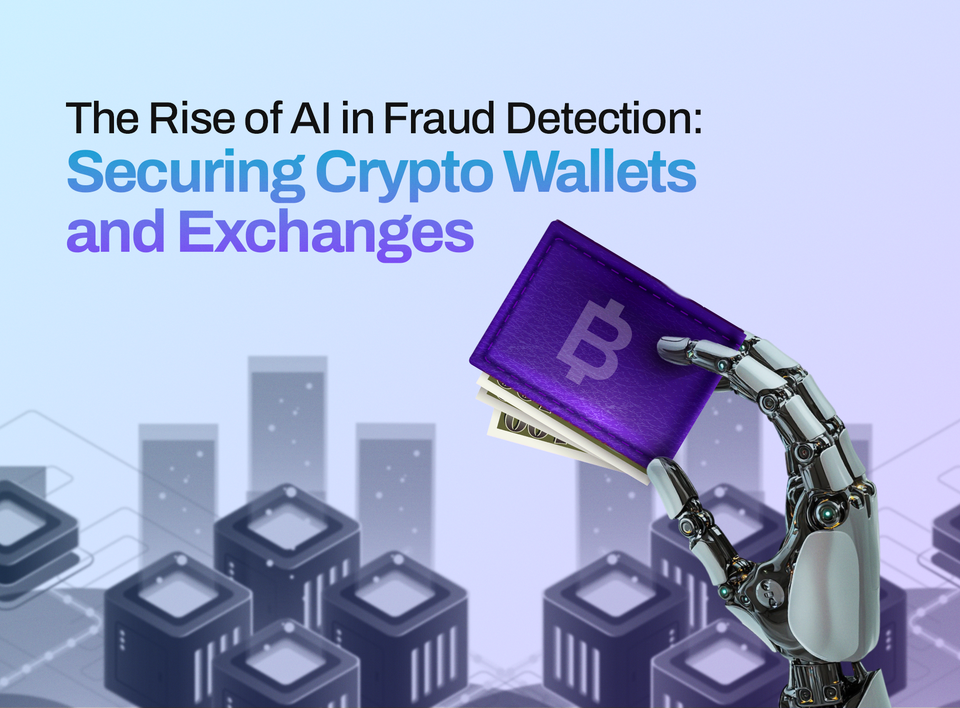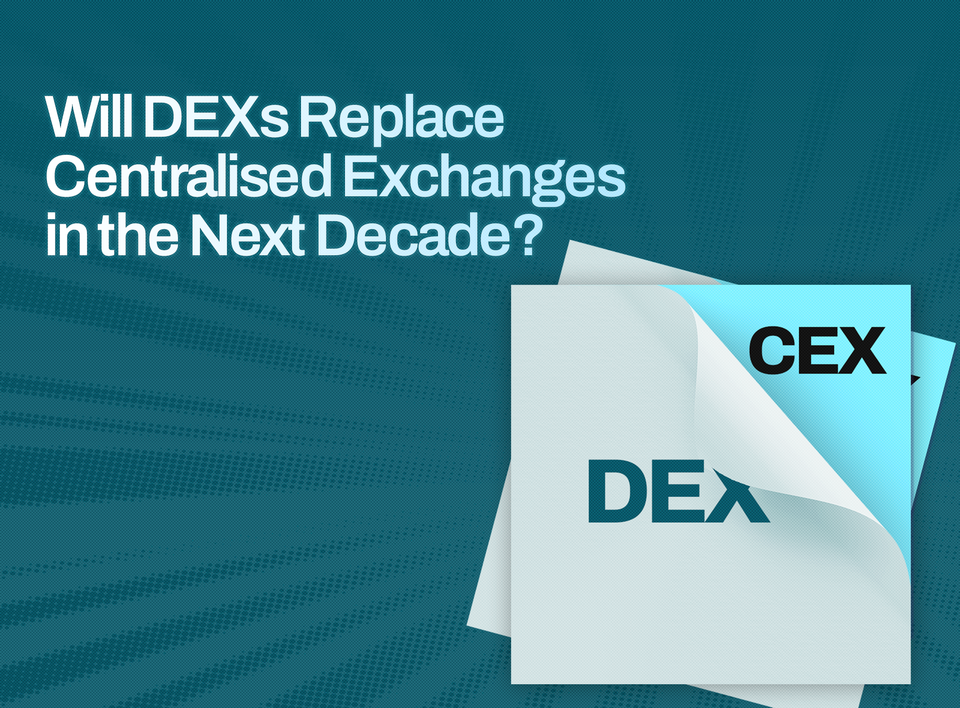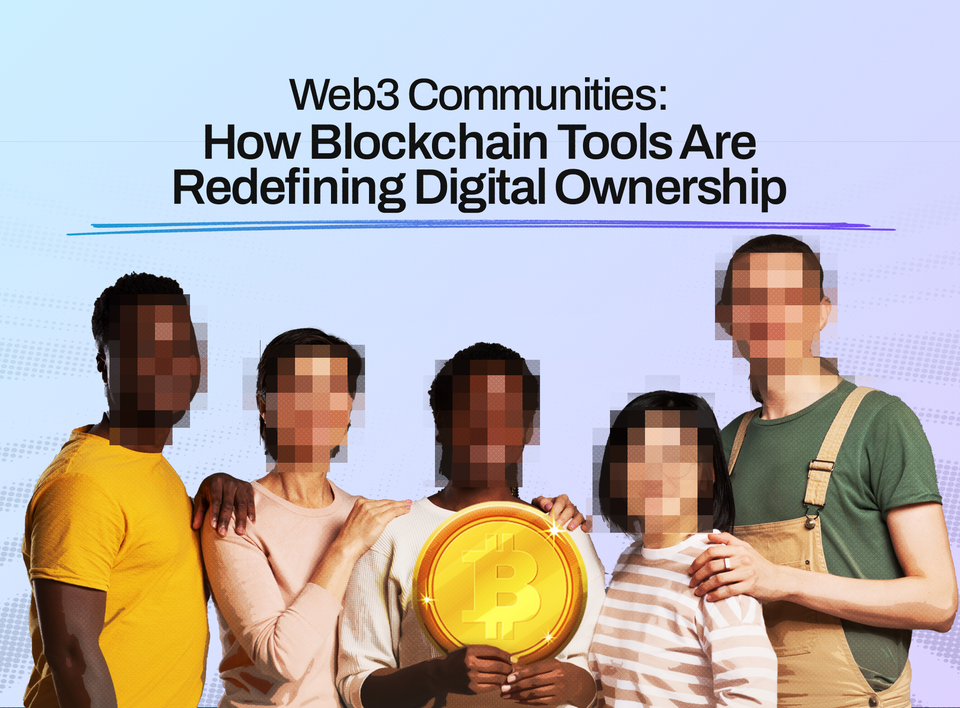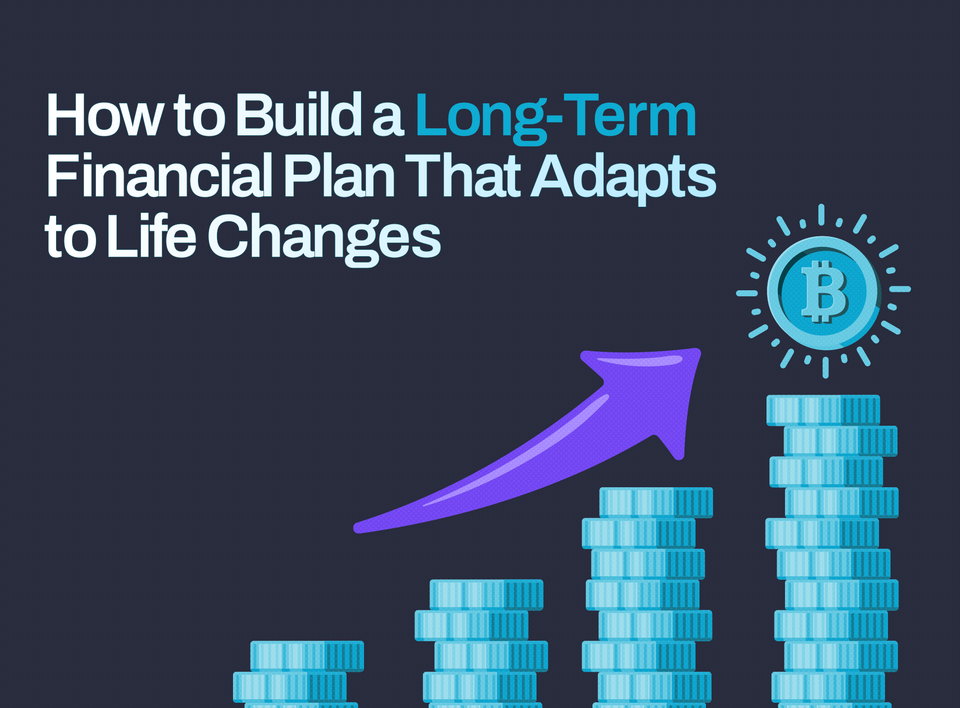The Future of Finance: Decentralized Systems
The article explores how DeFi can potentially increase financial inclusion and empower individuals through self-custody.
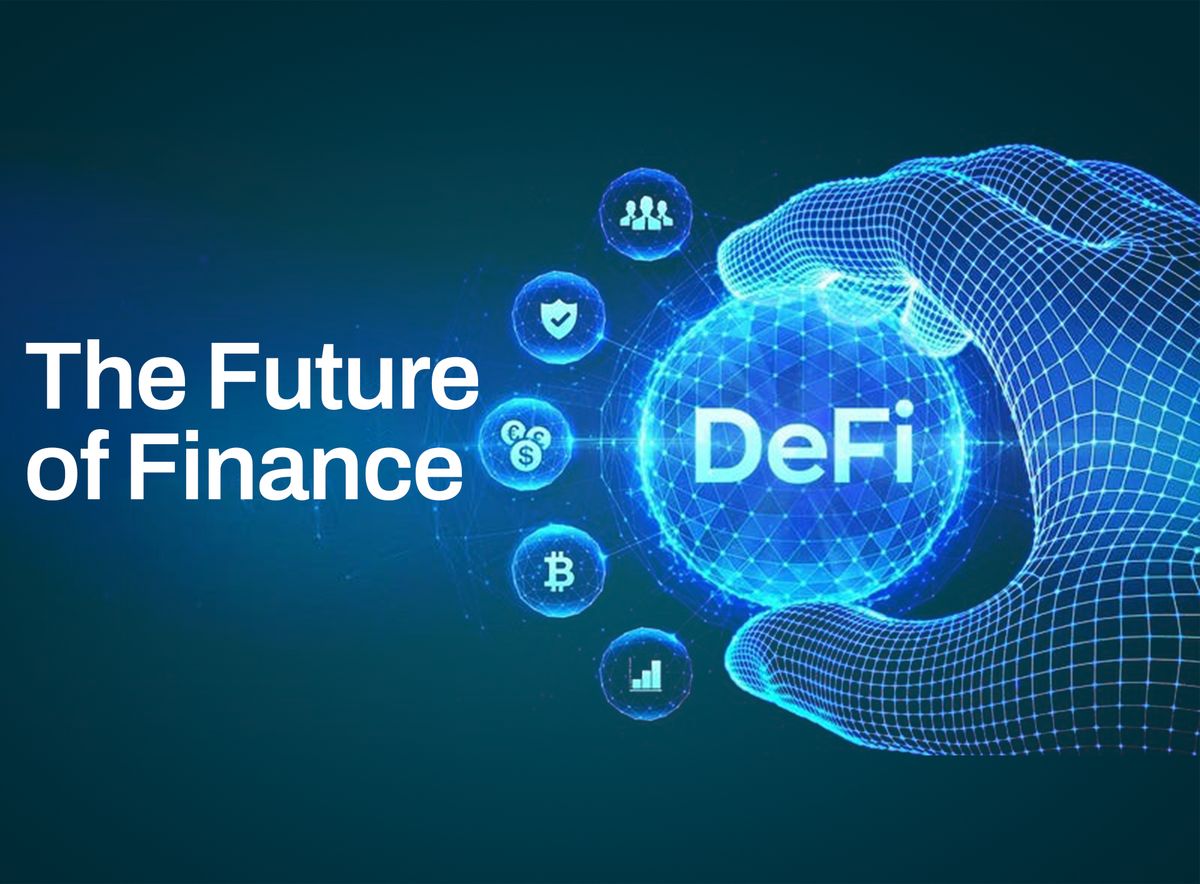
Decentralized finance (DeFi) refers to an alternative financial infrastructure built on blockchain. DeFi uses smart contracts to create protocols that replicate existing financial services in a more open, interoperable, and transparent way, (DeFi) is revolutionising the financial landscape, offering a decentralized alternative to traditional financial systems.
The article explores how DeFi can potentially increase financial inclusion and empower individuals through self-custody.
Decentralized Finance (DeFi) represents a significant shift in the financial landscape. It leverages blockchain technology to create open, borderless financial systems. Unlike traditional finance, which relies on centralized entities such as banks and brokers, DeFi operates through peer-to-peer networks, enabling direct transactions between participants without intermediaries.
DeFi, a decentralized form of finance utilizing blockchain technology, has gained prominence. Its advantages, including increased accessibility, reduced fees, and transparency, make it a potential game-changer in the quest for financial inclusion.
Understanding Financial Inclusion
Financial inclusion, a term often thrown around, refers to the accessibility and affordability of financial services for all individuals.
Traditional finance faces challenges in reaching the unbanked and underbanked populations, emphasizing the need for inclusive solutions.
Breaking barriers that traditional finance erects, DeFi empowers the unbanked by providing them with the tools to manage their finances independently. It also reduces dependence on intermediaries, fostering financial autonomy.
What is the DAO governance model?
A DAO (Decentralized Autonomous Organization) governance model is a collection of regulations that:
- define how the organization operates,
- ensures fairness and transparency so that everyone in the organization knows what’s going on and how decisions are made,
- empowers the organization to quickly adapt to changing circumstances while aligning with its vision and strategic goals,
- and ensures that the organization is true to its decentralized principle.
How does a DAO work?
Decentralized autonomous organizations function through a set of rules encoded into smart contracts. A core team of community members designs these rules, which include the DAO’s mission, fundraising strategies, and other conditions.
When the smart contract rules are set, the organization creates a DAO treasury funded by native tokens that give their holders the right to vote on project governance statements. When the funding round is complete, a DAO is deployed.
What are the DAO governance models?
Currently, there are four main DAO governance models, including:
1) ConstitutionDAO,
3) JuiceboxDAO and,
4) Ethereum Name Service DAO (ENS DAO).
(All these models come from real-life projects.
1. ConstitutionDAO
ConstitutionDAO is a governance structure that enables users to pool resources and gain shared ownership of assets via cryptocurrencies.
This DAO governance model ensures stability for its participants by providing an established set of rules defining how the DAO operates. These include voting, accepting new DAO members, and dealing with rule-breaking cases.
Benefits of ConstitutionDAO
ConstitutionDAO was one of the first DAO governance models and has showcased the potential of decentralized organizations and the effectiveness of collaborative efforts in achieving shared goals.
A Look at ConstitutionDAO
The ConstitutionDAO governance structure first appeared when a community of individuals sharing a common interest in preserving historical artefacts decided to encourage people to purchase a replica of the US Constitution. They created a decentralized autonomous organization to bid on this rare copy, which was up for auction at Sotheby’s.
The project almost achieved its goal and collected nearly $47 million in Ether. However, the auction house reduced this bid by taking into account taxation and other costs associated with maintaining the item.
The ConstitutionDAO was ultimately outbid by an anonymous buyer who offered $43.2 million. The DAO refunded everyone who donated their money to the auction.
2. Friends with Benefits DAO
The distinctive feature of a Friends with Benefits DAO is the use of social tokens to promote community members’ participation in a range of activities and initiatives within the project ecosystem. For example, by staking governance tokens, Friends with Benefits DAO members can not only vote on proposals but also earn rewards and get access to exclusive content or events. Projects using such formulas are known as Social DAOs.
The Friends with Benefits DAO governance model has evolved from basic governance with a consensus structure to a multi-group-based model that leverages Discord to offer proposals and Snapshot to vote on different recommendations.
Community members can upvote proposals that interest them the most. The proposal team then structures and cleans the ideas in preparation for community analysis and vote. The proposals with the most votes are put into action by the assigned team and publicly recorded on the blockchain. This helps maintain the structure and consistency of the proposal’s format.
Benefits of Friends with Benefits DAO
This model ensures increased community engagement thanks to the use of social tokens and rewards.
Moreover, the use of digital tools like Discord and Snapshot provides a more efficient and streamlined decision-making process.
This governance model is also highly adaptable and can serve the needs of various organizations.
A Look at Friends with Benefits DAO
Friends with Benefits, or FWB, is the original project that gave birth to the Friends with Benefits DAO governance model. The participants call themselves a new type of social network made up of creators and builders who believe in a better Internet.
The organization’s members hold $FWB tokens as a way to collectively fund and govern their community. They organize and host various events and have a Discord chat room with dozens of channels focused on different topics, from culture to crypto.
A similar example to FWB is the Bright Moments DAO. It demonstrates how NFT development can be incorporated into a DAO initiative. Starting as an NFT gallery for local artists to showcase their work, this is now centered around a growing NFT collection known as Crypto Citizens. In contrast to many other Social DAOs that prioritize online communities and digital discussions, Bright Moments is focused on IRL events, in particular live NFT minting experiences.
3. JuiceboxDAO
JuiceboxDAO is another type of governance structure named after the corresponding project. This model allows creators to crowdfund their projects and create native tokens for their communities.
JuiceboxDAO has a two-tier governance structure comprising a core team of stewards and a broader community of token holders. The stewards perform the platform's day-to-day management and implement the decisions made by token holders. Token holders, in turn, have the power to decide on DAO development by making changes to the codebase, adding new features, and allocating funds.
JuiceboxDAO is another type of governance structure named after the corresponding project. This model allows creators to crowdfund their projects and create native tokens for their communities.
JuiceboxDAO has a two-tier governance structure comprising a core team of stewards and a broader community of token holders. The stewards perform the platform's day-to-day management and implement the decisions made by token holders. Token holders, in turn, have the power to decide on DAO development by making changes to the codebase, adding new features, and allocating funds.
Benefits of JuiceboxDAO
The governance model is suitable for a wide range of cases, from community-owned platforms to project fundraising initiatives.
A look at JuiceBoxDAO
The JuiceboxDAO platform is representative of the JuiceboxDAO governance model. It’s an unaudited platform that enables various projects to raise funds via Ethereum’s public smart contracts. JuiceboxDAO allows users to create their fundraising pages, set up fundraising structures, define token distribution models, and much more.
JuiceboxDAO takes 5% of all the funds raised for each project and then rewards initiatives with their native token, JBX, in exchange for the platform fee.
4. Ethereum Name Service DAO
The ENS DAO model utilizes a 3-layer approach which comprises:
A. Disclosure of proposals, with most of them coming from the Discord channel.
B. Off-chain voting by delegates.
C. Voting on the blockchain.
Three types of proposals can be launched with an Ethereum Name Service DAO:
1. Social proposals such as fee changes or petitions to root holders.
2. Executable proposals, for example, smart contract execution through the DAO wallet.
3. Constitution amendment or proposals aimed at modifying the DAO constitution.
Each proposal type is further categorized into DAO’s four work streams:
· Governance talks
· Community-related proposals
· ENS system promotion
· Suggestions for public welfare
Each of the abovementioned work streams includes five stewards who manage operational tasks, develop and elaborate on the group’s goals, request funds from the DAO, and approve financing for subgroups, workstreams, or contributors within a working group.
Benefits of ENS DAO
This decentralized governance model allows for increased community participation while ensuring a transparent and democratic process for making decisions.
A look at Ethereum Name Service DAO
The ENS protocol is a real-life project governed by an ENS DAO. The Ethereum Name Service DAO is responsible for managing protocol development, and community members and stakeholders can participate in the decision process via voting and proposal submission.
To pass a vote in the ENS DAO, a quorum of only 1% is required for executable proposals, social proposals, and constitutional amendments. This is a relatively low number by voting norms since it allows a small number of delegates to effectively push proposals forward.
Choosing a decentralized governance structure is a complex process that requires many different aspects to be taken into account, from the size of your organization to its voting mechanics.
Defi influence on Governance and Power structures
DeFi introduces novel forms of governance, primarily through the issuance of governance tokens.
These tokens empower holders to participate in the decision-making processes of DeFi platforms, including changes to protocol parameters, allocation of funds, and even modifications to the governance framework itself.
This democratization of control challenges traditional hierarchies by distributing power among a broader base of stakeholders, potentially leading to more equitable and community-driven decision-making processes.
How Governance Tokens Work in Detail
Governance tokens are cryptocurrencies built on blockchain platforms that grant holders the right to participate in a protocol's governance. They are designed to provide holders with ownership in fully decentralized protocols. Anyone who holds a governance token can influence a protocol’s future direction.
The primary purpose of governance tokens is to decentralize decision-making and to give holders a say in how the project is run.
Functionality and Purpose of Governance Token
1. Voting Rights: Governance tokens confer upon their holders the right to vote on proposals that affect the direction and operation of the blockchain project or DeFi protocol. Each token typically equates to one vote, although the exact mechanics can vary between projects. This voting power allows token holders to influence critical decisions, thereby playing a direct role in shaping the project’s future.
2. Opportunities for Collaboration: Once a proposal is made, token holders are free to collaborate after holding discussions among themselves. Anyone who holds tokens can state how they’ll vote while also obtaining incentives to collaborate with other community members who intend to vote the same way.
3. Greater Efficiency: Another benefit of governance tokens involves the efficiency that they offer. Having a governance token gives community members a sense of involvement in the project, as they now have a say in it. This then leads to more active participation, since members want to see the project succeed, effectively resulting in more efficient decisions about the project.
Governance Tokens Process
If a DeFi project wants to release governance tokens, it’ll launch them on a smart contract blockchain like Ethereum (ETH). Every dApp will have a unique token issuance policy for its governance tokens, which should be listed online and in a whitepaper.
DeFi protocols often set aside some governance tokens to use as reward incentives for community members. People who lock their crypto in a dApp’s liquidity pools receive these governance tokens often for their service.
When it comes to voting with these tokens, DeFi sites should have a governance portal with active and pending proposals. Then, people will only have to connect their crypto wallet and submit the number of tokens they wish to vote for a proposal. The more tokens a person locks into a proposal’s smart contract, the greater their say over the final verdict.
Most dApps use a blockchain governance structure called a DAO (decentralized autonomous organization) to both submit proposals and tally votes.
A blockchain’s DAO includes all the stakeholders in a project, including developers, validators, and investors. DAOs also rely on smart contracts to tally votes and execute orders to avoid human manipulation.
Where Are Governance Tokens Used?
A. YFI Token
The YFI token is the native token for Yearn Finance, which focuses on full decentralization. The developers’ main goal for this governance token is to provide the Yearn Finance community with control over the project. This token also emphasizes the potential for developing a truly self-sufficient DAO.
B. MKR Token
MKR is the governance token for MakerDAO, considered to be among the most popular lending platforms on web3. Anyone who holds MKR governance tokens can use them to vote on changes to the platform’s economic rules.
C. UNI
UNI is the primary governance token for the Uniswap protocol. Token holders can take part in decision-making processes as they relate to the Uniswap platform. However, Uniswap developers still retain control over how the project will continue in the months and years ahead, which means that this protocol is more centralized than some others.
Initially designed for the purpose of rewarding early adopters, ENS governance tokens were airdropped by their project, Ethereum Name Service, toward the end of 2020. Subsequently, the price of these tokens has increased significantly. Because of the large increase in their value, early adopters have been rewarded for the initial support they gave.
How Defi is Empowering Individuals
Participating in DeFi offers both opportunities and risks for individuals. On the positive side, DeFi provides access to a wide range of financial services, including lending, borrowing, and trading, without the need for traditional banking infrastructure.
This accessibility can be particularly beneficial for those in regions with limited access to financial services. Additionally, individuals can earn returns on their assets through yield farming and liquidity provision, engaging in the DeFi economy in ways that were previously unavailable.
Strategies for Enhancing Financial Inclusion through DeFI
i. Lock-up yields pay interest or a share of trading fees for immobilizing digital assets to serve as liquidity or collateral for a service.
ii. Liquidity mining pays interest in the form of tokens issued by the service itself, typically governance tokens.
iii. Airdrops reward wallet addresses with tokens to promote awareness of new digital assets.
iv. Yield farming optimizes returns from liquidity mining and lock-up yields by automatically moving funds among services.
v. Liquidation fees pay market-makers a percentage of the value of under-collateralized loans that they successfully liquidate (though not necessarily automatically). These mechanisms are not necessary components of DeFi but have become widely identified with it. However, they may also distort investor expectations, generating unsustainably high returns as new capital flows in and token values appreciate.
On DeFi platforms, each token is worth one vote, so users’ voting power is directly proportional to their token holdings. To ensure that some tokens end up in users’ hands, many platforms reward users with tokens when they provide liquidity to the platform.
A user can provide liquidity by making an asset available for others to purchase or borrow. The user deposits the asset in an escrow account owned by a smart contract, at which point other users can purchase or borrow it at a contractually specified price. Liquidity providers are rewarded with newly minted tokens. The smart contract specifies how many new tokens a liquidity provider will receive for depositing an asset for a fixed period.
A DeFi platform will typically also issue new tokens as compensation for founders, software developers, and the venture capitalists who initially funded the platform. As such, users do not necessarily have full ownership of a platform; rather, they usually share ownership with these insiders.
Token holders vote on key policy decisions, such as liquidity providers’ rewards, transaction fees, and the transaction protocol for the platform’s smart contracts.
A user community known as a decentralized autonomous organization (DAO) runs the voting process. Token holders can propose changes to the platform’s policies in a DeFi platform’s DAO, at which point the policy change is put to a vote. If the measure passes, then the DAO immediately updates the platform’s smart contracts to reflect the new policy.
Let’s examine a DeFi lending platform that enables collateralized lending across several digital assets.
Most DeFi lending platforms, such as Compound, Aave, or Cream Finance, share the same basic design. Unlike in traditional bank-intermediated credit markets, borrowing and lending rates on a DeFi lending platform are not set by financial intermediaries:
Consider the following scenario with a DeFi platform (henceforth “the platform”). Lenders have 200 units of the popular stablecoin USD Coin (USDC) they would like to lend. Borrowers would like to borrow 100 units of USDC, and they have some Ether (the cryptocurrency issued by the Ethereum blockchain) they can post as collateral.
Lenders deposit their $200 of stablecoins in the USDC pool on the lending platform. Borrowers then borrow $100 from the pool and deposit enough Ether to cover the required margin — say, $150.
The interest rate paid by borrowers is algorithmically determined by the pool’s utilization rate, which is the ratio of borrowed USDC to deposited USDC. The higher the utilization rate, the higher the interest rate paid by borrowers.
Lenders receive the interest rate paid by borrowers minus a spread collected by the platform. The platform issues new tokens as a reward to lenders.
Lenders receive the interest rate paid by borrowers minus a spread collected by the platform.
Meet the Projects Making a Difference
One of the most promising areas where blockchain can make a significant impact is in financial inclusion and access to financial services. According to the World Bank, approximately 1.7 billion adults worldwide remain unbanked, lacking access to formal financial services.
Blockchain-based solutions, such as decentralized finance (DeFi) platforms and stablecoins, can provide unbanked populations with secure, low-cost, and accessible financial services, empowering them to participate in the global economy and improve their livelihoods.
Prominent DeFi projects that utilize governance:
1. Uniswap (UNI): Uniswap is a decentralized exchange that introduced liquidity provision through automated market makers (AMMs). UNI tokens were airdropped to past users of the platform, ensuring a broad distribution. Uniswap also employs a governance model where UNI holders can vote on proposals to upgrade the protocol. This model has been successful in engaging the community and aligning interests.
2. Compound (COMP): Compound is a lending and borrowing protocol that has been a pioneer in the DeFi space. The COMP token governs the platform’s decision-making process, allowing token holders to propose and vote on changes. The token emission model is unique, with 4,229 COMP distributed daily to users. This approach incentivizes user engagement and active participation in the governance process.
3. Curve Finance (CRV): Curve Finance is known for its low-slippage stablecoin trading pools. CRV tokens are used for governance and protocol decisions. The token was distributed through liquidity mining and by rewarding early users. This incentivized users to provide liquidity and engage with the platform.
4. Compound Governance (COMP): Compound’s governance model has been influential in shaping the DeFi industry. It utilizes the COMP token to allow token holders to propose and vote on protocol changes. This approach encourages user participation and input, ensuring that the platform evolves in a decentralized and community-driven manner.
Wrapping Up The Final Thoughts
DeFi’s impact on governance, power structures, and individuals is profound, offering a vision of a more inclusive and accessible financial system while simultaneously presenting new challenges and risks.
As the DeFi space continues to evolve, ongoing dialogue and innovation will be crucial to addressing these issues and realizing the full potential of decentralized finance.
However, DeFi also comes with significant risks, including smart contract vulnerabilities, regulatory uncertainties, and the potential for loss due to market volatility or fraudulent activities. The absence of intermediaries means that users must navigate these risks independently, necessitating a high level of understanding and caution.
Disclaimer: This article was written to provide guidance and understanding. It is not an exhaustive article and should not be taken as financial advice. Obiex will not be held liable for your investment decisions.

